Analog Panel Meter Movements
Published by Hoyt Meter on 7th Jul 2017

Hoyt Meter Movements
The basic guts or the part that makes any analog panel meter work is referred to the meter movement.
There are several different types of meter movements.
The meter movement itself is based on principles derived from D’Arsonval, a French Physicist in the nineteenth century.
A moving coil is located placed between two magnet assemblies. One small magnetic core that is placed inside the coil and another large magnet placed above the coil. The coil itself consists of very fine copper wire wound around an aluminum core. The wire can be as fine as a human hair in some cases and is wound on a custom machine that applies the correct tension on the wire. The number of turns or revolutions around the core itself is very important. As more wire is wrapped around the core the current capacity decreases and resistance increases (all things being equal).
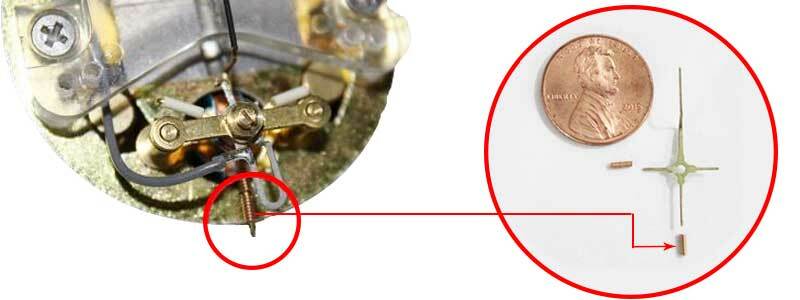
As current flows through the wound coil assembly from the source being measured a reaction occurs between the magnets. This electromagnetic field causes the coil to twist or push against the spring and the pointer to move to the right hand of the scale for most applications. Once the current is released, the spring relaxes and returns to zero. Believe it or not, the spring itself it part of the circuit as well. One end of spring is soldered to the zero adjust which in turn I connected to the negative terminal of the meter by the grey wire shown below. If you were to flip the movement over, you will see a spring on the back that is directly soldered to the positive terminal of the meter.
Balancing the movement itself is the challenge in producing a meter that is uniform and meets specification across the range. There are many techniques used to balance meters, Hoyt typically uses tiny wound wire coils that are crimped on. They are positioned in the horizontal and vertical axis to the balance/cross arm. The various pointer types (airplane, lance, spade, etc.) are fastened to the balance/cross arm at the 12 O’clock position.
External Magnet (#17 movement)
These movements, accurate within 2% are built on the D’Arsonval principle according to the best methods of meter manufacture. Features include Alnico V Magnets for high torque movement, soft iron pole pieces electronically bonded to the magnetic system for long life, microscopically inspected and selected jeweled bearings, hardened pivots specially cemented and baked to short-proof anodized coil forms for trouble free life. Strong tubular pointers – either lance or knife edge types, ceramic pointer stops, hair springs for quick response and good damping are incorporated into all our movements.
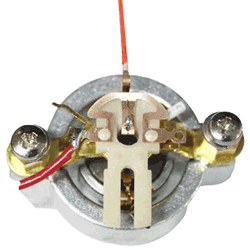
Taut Band movement
This moving mechanism is suspended between two pieces of metal therefore eliminating the needs for pivots, jewels, and springs found in our traditional meter. They are great for applications where extreme sensitivity is required.
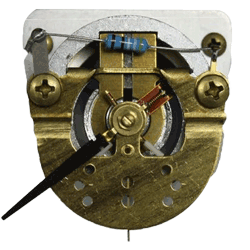
250 Degree movement
Hoyt once-patented 250-degree meter movement is a self-shielded pivot and spring-loaded jewel meter, built for rugged industrial applications. This shock resistant movement incorporates precision aligned, mechanically interlocked construction with very high torque. The movement is good down to 200 microamps with ample resistance.
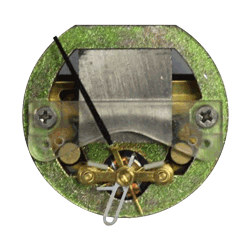
Self-shielded Accu-ring (#19 & #22 movements)
This completely self-shielded pivot and jewel high torque movement is constructed with high density sintered iron ring and pole piece which provides the best possible flux distribution through the entire 100-degree swing of the coil. This unique feature coupled with the strong Alnico V Bar magnet offers exceptionally high torque with minimum lag for fast response and quick, accurate readings, spring-loaded jewels are standard for use in rugged applications.
The #22 movement is smaller, less powerful version of the #19 movement. Accuracy of 2% is standard. 1% accuracy is available in most ranges.
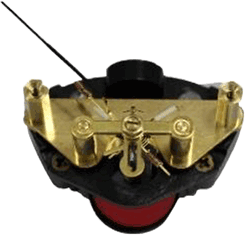
AC Repulsion
Hoyt AC Repulsion movements are made with an accuracy of 2%. Jeweled bearings, insulated or Bakelite zero adjusters, Hoyt cross arm balance, special constructed viscus damping and choice of lance or knife edge pointers. The Hoyt AC Movements are manufactured with brass supports to match the moving element. This feature enables the Hoyt AC meter to maintain accurate readings over a wider temperature range.
More information:

